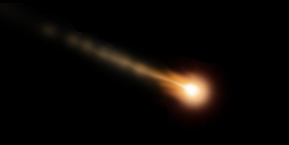
COLLECTION
| Meteorite Name: | Sutter's Mill |
| Location: | Coloma, California, USA |
| Classification: | Pending |
| Witnessed Fall: | Yes |
| Date and Time: | April 22, 2012 (0800 hrs) |
| TKW: | TBD |
| Remarks: |
A dramatic fireball, brighter than the sun, lit the skies of Northern California and Nevada, and detonations were heard and felt by countless witnesses. NASA's William Cooke estimated that a mass weighing approximately 70 metric tons had produced the bolide. Marc Fries once again successfully deciphered Doppler radar return signals – further refining the strategy of his making and putting a bulls eye on the strewn field for meteorite hunters to target – and Rob Matson independently corroborated Fries' findings, having identified the same radar return as a signature of the epic fireball. The hunt was afoot... On April 24, Robert Ward started hunting the location identified by Fries immediately upon his arrival... at 5:36 am... in the dark... with a flashlight. Later that morning, at 11:05 am local time, he texted, "found it, it's a carbonaceous!!!" He'd found the first two pieces of the meteorite, a broken stone, at 11:00 am local time, just over five hours after the beginning of his ground search in darkness. This was the second-fastest recovery of the first piece of a witnessed fall by a meteorite hunter in history, second by just over 6 hours to Jack Schrader's record of 44 hours and 58 minutes at Whetstone Mountains in 2009. Sutter's Mill was only California's third witnessed fall, and it was Robert Ward who also triangulated and was responsible for recovering California's Red Canyon Lake meteorite in 2007 – making him personally responsible the recovery of 2 out of the 3 witnessed meteorite falls in California history. Upon just a few minutes of contemplation, Ward made the decision to do what meteorite hunters almost never do: to immediately announce his recovery and the location (a confirmation of the Fries prediction) to the meteorite community, including the fact that it was a rare composition. Countless meteorite hunters were in the field the next day, which was what Ward had selflessly hoped for because he knew the forecasted rains would soon be catastrophic to the fragile carbonaceous chondrite. I flew to meet Ward that night and was fortunate enough to find two small, crusted fragments early the next morning – before the rain hit later that same day. In spite of Ward having called in the troops (perhaps 100 meteorite hunters and enthusiasts) with his early announcement – and having inspired countless locals (surely over 1,000) to hunt, largely by virtue of his media presence – he holds the trifecta at the time of this writing (over a month after the fall, after most of the hunting had ceased), having found the first, smallest (0.090 grams, below) and largest (approximately 42 grams, the main mass) specimens from the fall. Selected media: |
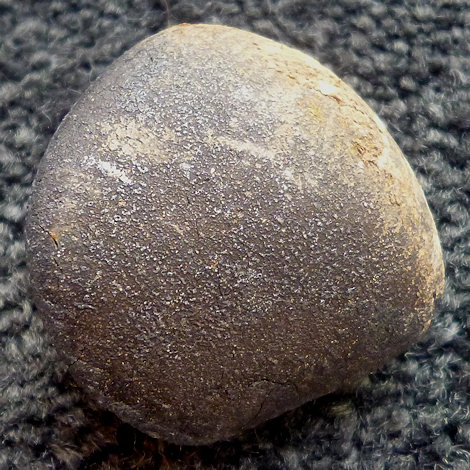 | |
| 33.721 gram complete specimen | |
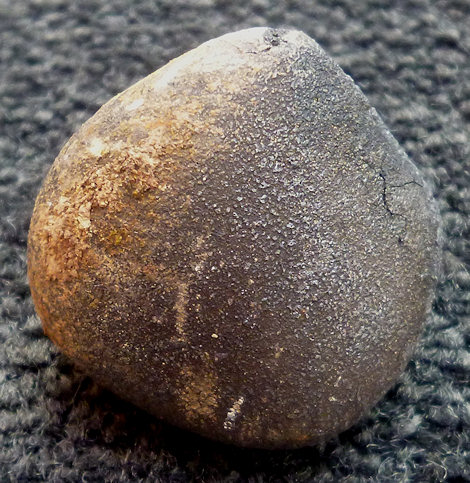 | |
| 33.721 gram complete specimen (alternate angle featuring terrestrial impact inclusion) | |
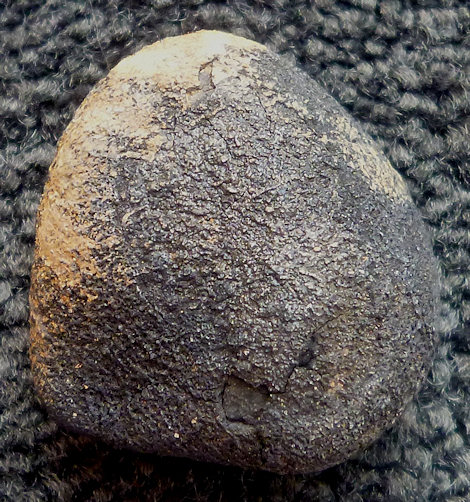 | |
| 33.721 gram complete specimen (reverse angle) | |
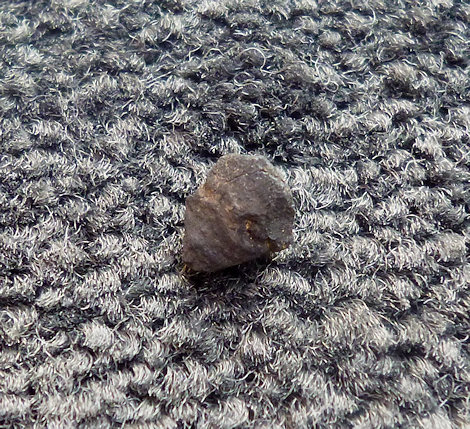 | |
| 0.090 gram complete specimen (leading surface) | |
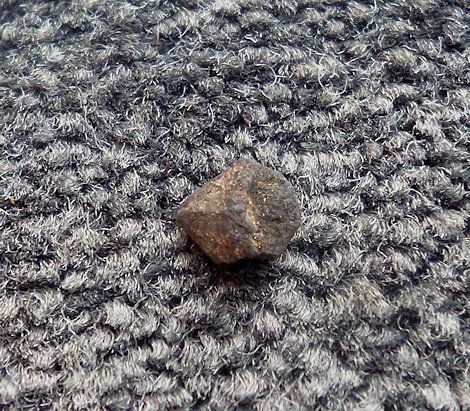 | |
| 0.090 gram complete specimen (trailing surface) | |
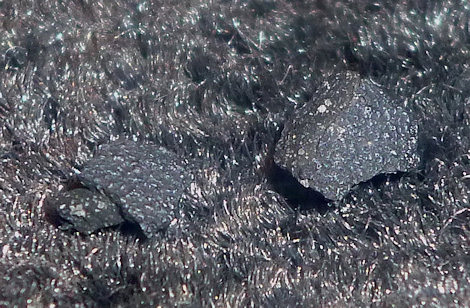 | |
| 0.039 and 0.070 gram crusted fragments | |
 | |
| 0.039 and 0.070 gram crusted fragments in situ at 8:30 am on April 25, 2012 | |
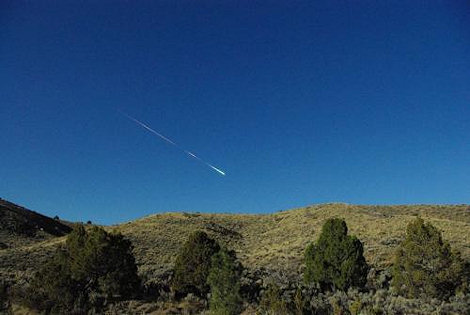 | |
| The Sutter's Mill fireball | |
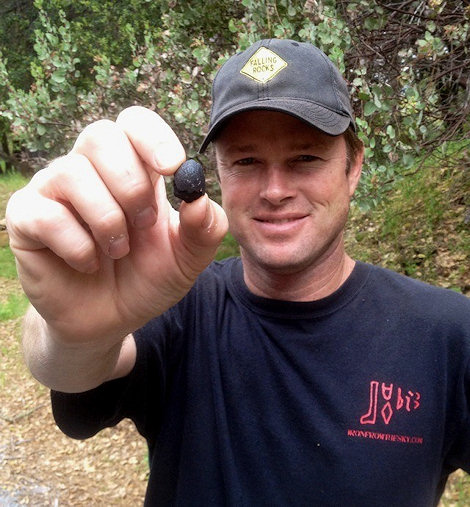 | |
| Robert Ward with his historic find | |
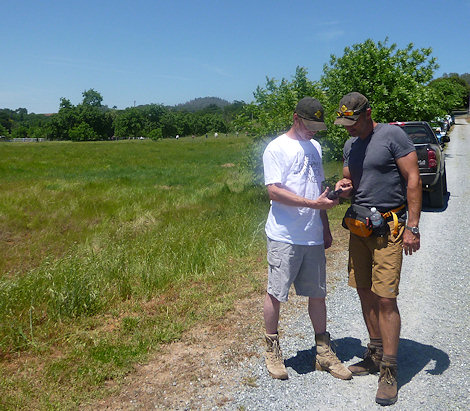 | |
| Working to extend the strewn field by sorting through data with Robert (with the NASA team at left in background, after we worked with data and local landowners to help put them in the best places to hunt for larger material) | |
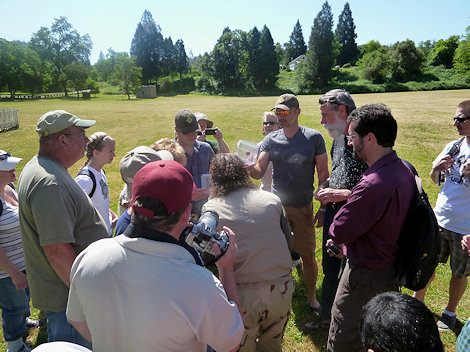 | |
| With Robert, showing the locals what to look for in the field | |
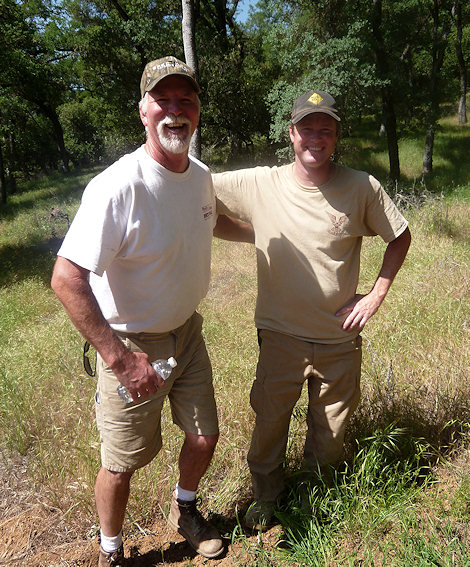 | |
| One of my favorite photos from the strewn field, an image I took of Robert with our new friend Mitch Carey, finder of the 33.721 gram individual (originally reported as 35.1 grams) | |
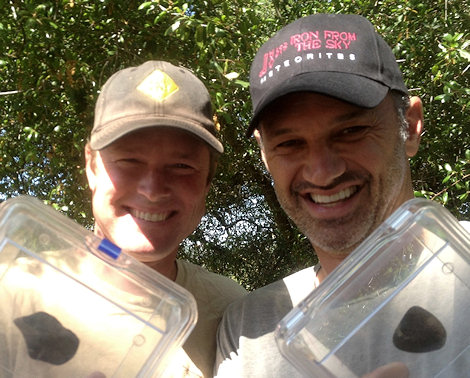 | |
| With Robert and the "main masses" | |
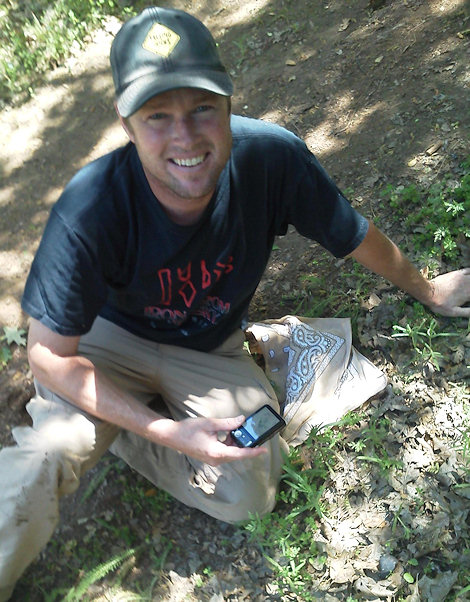 | |
|
Robert with the main mass, in situ Listen to the voicemail message from Robert at moment of the Main Mass find: | |
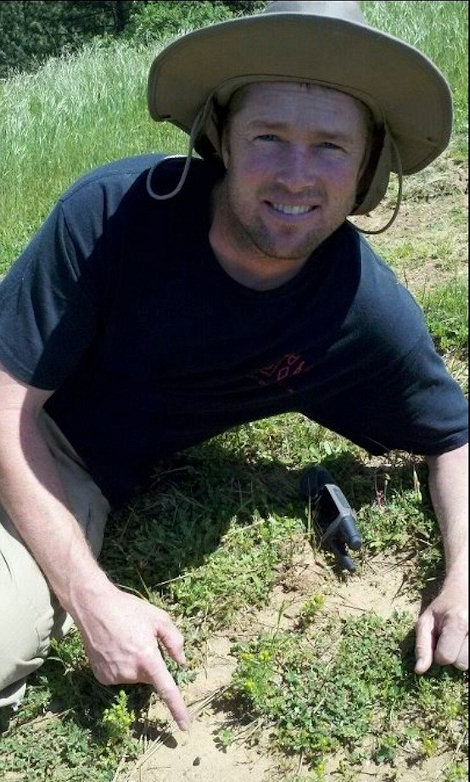 | |
| Robert with the smallest complete individual, 0.090 grams, in situ | |
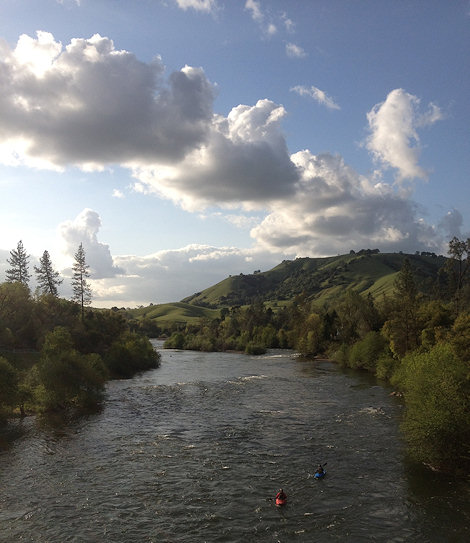 | |
| The South Fork American River in Coloma, a photo I took from the strewn field on April 26, 2012 | |
